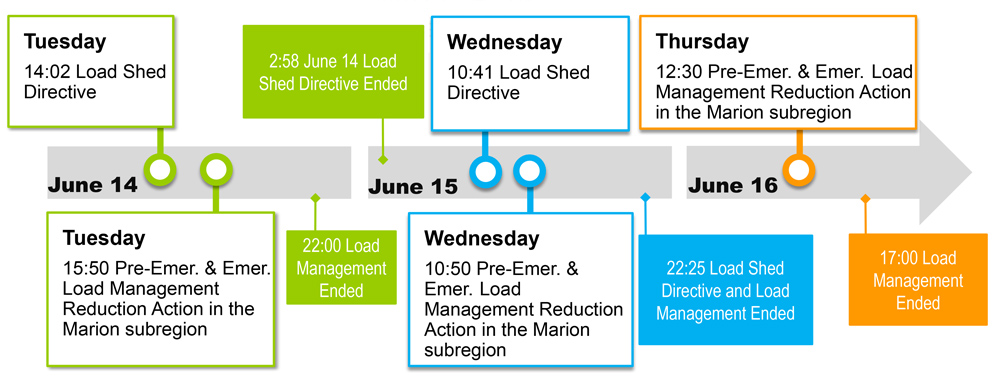MISO is currently evaluating five new recommendations from its Independent Market Monitor that include transmission reconfiguration plans, reducing out-of-market commitments, a future-looking dispatch model and ensuring the RTO only pays for real load reductions.
Monitor David Patton, Potomac Economics’ president, issued five new recommendations last month as part of his 2021 State of the Market report.
The Monitor says MISO should:
- work with its transmission owners to identify and implement economic transmission reconfiguration plans to better manage congestion;
- evaluate and restructure its unit commitment process to reduce out-of-market commitments and ensuing make-whole payments;
- develop a multi-hour, look-ahead dispatch and commitment model to better manage fluctuations in net load and decisions on using storage resources;
- improve rules around demand participation in energy markets so that MISO only pays for load reductions that occur; and
- consider classifying load-modifying resource (LMR) curtailments as short-term demand in pricing models and the unit dispatch system.
The last recommendation comes after Patton noticed that LMRs are allowed to set real-time energy prices long after emergency conditions have passed. He said that’s because of MISO’s extended marginal locational pricing (ELMP) model respecting resources’ ramp rates, which makes it impossible to replace a large volume of LMRs within a single dispatch interval. He said if the RTO would treat LMRs as an operating reserve demand in the ELMP model, it would eliminate the need for other resources to ramp up and replace them.
Patton said he also believes an hours-ahead dispatch model will be a “key component of the MISO markets’ ability to economically and reliably manage the transition of its generating portfolio.”
MISO’s out-of-market commitments and the associated revenue sufficiency guarantee costs increased “substantially” in 2021, Patton said in calling for staff to examine their commitment process.
“Our analysis indicated that most of these commitments were not ultimately needed to satisfy MISO’s energy, operating reserves and other reliability needs,” he said.
Finally, Patton said MISO should get a better handle on its demand response resources.
“In the past few years, we have identified a number of cases where demand response resources or energy efficiency resources were paid substantial amounts for load reductions that were not realized,” he said in the report.
While he said some of the problem is because of “conduct of the resources,” he also said some of the issue can be ascribed to “suboptimal tariff and settlement rules.” MISO could use better settlement calculations “to ensure that the estimated load reductions truly represent the additional load that would have existed but for the demand response resource,” Patton said.
MISO is set to review with stakeholders the report’s recommendations and its initial response during an Oct. 13 Market Subcommittee meeting. MISO spokesperson Brandon Morris said the grid operator’s executive leadership will deliver a formal response to the recommendations during the Board of Directors’ Markets Committee meeting in early December.
Under its tariff, the RTO has 120 days to make a public response to the annual report’s recommendations.
In the meantime, MISO and its transmission owners continue closed door meetings of the new Reconfiguration for Congestion Cost Task Team (RCCTT) that was formed at the beginning of the year. The group focuses on plans to reroute transmission flows during times of heavy congestion costs and could address Patton’s first recommendation. (See “RTO Forms Task Team for Tx Reconfigurations,” MISO Planning Subcommittee Briefs: Feb. 8, 2022.)
The nonpublic RCCTT maintains a monthly list of the footprint’s top congested constraints.
Some stakeholders have said MISO is about a decade away from significant new transmission that can manage increasing congestion. Reconfiguration plans are desperately needed in the interim.
Patton delivered a state-of-the-market presentation last month where he focused on his longstanding recommendation that MISO adopt a sloped demand curve in its capacity auction. (See MISO Warming to Patton’s Sloped Demand Curve.)



